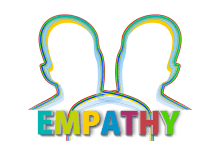By Brian Hengesbaugh
Why aren’t there more women on corporate boards? Women constitute 47% of the labor force and 52% of management and professional positions (Bureau of Labor Statistics, 2017). Yet women comprise just 21% of corporate board seats (Catalyst, 2018).
This dearth of women on corporate boards exists despite what appear to be strong efforts to the contrary. In 2009, the Security and Exchange Commission (S.E.C.) ruled that publicly traded companies need to disclose how diversity factors into the selection process for directors. Moreover, a pair of surveys in 2012 showed that 75% of U.S.-based publicly traded companies had instituted diversity policies, and 80% believed that diversity in the boardroom created shareholder value. It seems that diversity policies and the belief in the importance of diversity is not enough.
A 2017 article, published by Catherine Tinsley and colleagues, explores the decision making factors that influence corporate board selection. Classic decision making indicates the use of a multi-attribute decision making model to: identify the selection criteria, weight each criterion based on relative importance, and select candidates based on performance against these weighted factors – a process known by I-O Psychologists as mechanical combination. However, these decision aids are infrequently used in practice. HR managers and head-hunters often believe that using their “gut instinct” produces better results. This preference for instinct over analytic tools increases with experience (Camerer and Johnson, 1991).
In the absence of external decision making aids, we regularly rely on rules, known as heuristics, to simplify complex decisions. These mental shortcuts often operate nonconsciously to ease the cognitive burden of a decision. Tinsley posits that the percentage of women on corporate boards may be slow to increase, despite the presence of positive attitudes towards gender diversity, due to the use of a gender-matching heuristic.
Gender-matching refers to the propensity to match the gender of the incoming candidate to the gender of the board member being replaced. The results of the analysis of archival board data from 2002-2011 for more than 3,000 U.S.-based publicly traded firms showed that a woman is most likely to be selected to join a board when a woman has just left the position. On average, 12.8% of new board members are women. This number drops to 10% when replacing a man, and increases to 23% when replacing a woman – nearly doubling the rate at which women are selected (Tinsley, Wade, Main, & O’Reilly, 2016).
While the propensity for gender-matching remained robust, Tinsley’s subsequent laboratory studies found that fewer than 10% of participants cited gender-matching as a criteria for board member selection. This indicates that the gender-matching heuristic is primarily operating outside of conscious awareness.
Further laboratory studies by Tinsley and colleagues sought to understand “what works” to increase the representation of women on boards. These studies examined two factors: (1) highlighting the importance of gender diversity and (2) manipulating the gender composition of the candidate pool. Results showed that priming decision makers by highlighting the urgency of selecting a woman had little impact on improving gender diversity. However, there was a significant increase in the selection rate of women when the candidate pool was comprised of more women than men, suggesting a need to more actively recruit female applicants if gender-diversity is valued by an organization.
Additional research is needed to explore the nonconscious mechanisms of the gender-replacement heuristic, as well as understand the factors that work to increase the selection of women to corporate boards. Practitioners should explore methods of increasing the female to male ratio of applicants by examining qualities of job ads, recruiters, or company culture that attract women applicants.
Key takeaways:
Women are underrepresented on corporate boards.
Women are most likely to be selected as a new board member when the board member being replaced is a woman.
Increasing the number of women in the candidate pool increases the rate at which women are selected.
References:
Camerer, C. F., & Johnson, E. J. (1991). The process-performance paradox in expert
judgment: How can experts know so much and predict so badly? In W. M. Goldstein & R. M. Hogarth (Eds.), Research on Judgment and Decision Making: Currents, Connections, and Controversies, pp. 342-364. Cambridge, UK: Cambridge University Press.
Catalyst. (2018, October). Pyramid: Women in S&P 500 Companies. Accessed at
https://www.catalyst.org/knowledge/women-sp-500-companies (October 2018)
Tinsley, C. H., Wade, J., Main, B. G. M., & O’Reilly, C. A. (2016). Gender Diversity on U.S.
Corporate Boards: Are We Running in Place? ILR Review, 70 (1), 160-189
US Department of Labor, Bureau of Labor Statistics. (2017, April). Women in the labor force:
a databook. Accessed at
https://www.bls.gov/opub/reports/womens-databook/2016/home.htm (October 2018).










